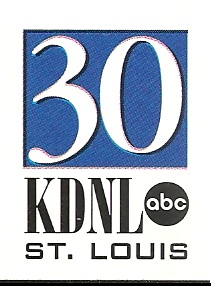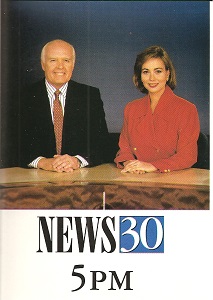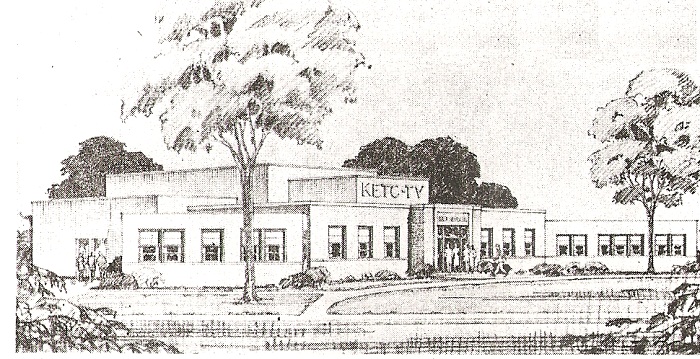Television Articles
First Local Color Broadcast on KSD
First Local Color Telecast Originated By KSD-TV On June 11, 1956
The first live color telecast originated by a St. Louis station was presented by KSD-TV on June 11 [1956]. The show originated in a special studio on the ninth floor of the downtown store of Famous-Barr Company and marked the opening of an eight-day color television exhibit and demonstration staged by the Owens-Corning Fiberglass Corp. It was seen in color on approximately 400 sets in the area.
While the Post-Dispatch station has for several years been telecasting films and network programs in color, this was KSD-TV’s first live color show. It was produced by Frank Eschen, director of special events for the station, who also served as master of ceremonies.
Singer Vaughn Monroe headlined the half-hour program. He sang a medley of old favorite tunes, his newest record hit, “There She Goes,” and joined Charlotte Peters, star of KSD-TV’s weekday Charlotte Peters Show in “Share the Luck,” a tune which he recorded. Charlotte sang the song first in the Red Cross musical “Banners High,” which marked the Red Cross anniversary June 4. She learned the tune from Vaughn’s record, since she does not read music.
Appearing on the program were Mayor Raymond R. Tucker; Morton D. May of the Famous-Barr Company; George M. Burbach, general manager of the Post-Dispatch station; Howard Niepp, Midwestern regional sales manager for the Owens-Corning Fiberglass Corp., and Marge Moody, fashion coordinator for the department store, who presented a fashion show.
Others from the Post-Dispatch station appearing on the color telecast were Wilma Sim, home economist on the weekday Homemaking with KSD-TV program, and Harry Gibbs, who is known as Wrangler Texas Bruce to youthful televiewers.
Wilma exhibited a special fruit bowl in front of the television camera, made from a hollowed out watermelon half, and containing colorful cantaloupe balls, cherries, pineapple and other fruit.
Gibbs, who has accepted Hugh O’Brien’s challenge to all television cowboys who think they are faster on the draw than Wyatt Earp, was joined by Vaughn Monroe in a contest before the camera.
Also appearing on the initial color telecast were Red Schoendienst and Stan Musial. They participated in a baseball skit featuring Charlotte Peters on the mound. Charlotte sang a chorus of “Take Me Out to the Ball Game” as a finale.
A Dumont color camera was used for the telecast in a special light-protected studio four by six feet in size. The camera was used after the telecast for in-store color telecasts on a closed circuit to 16 receivers.
The special program was directed by Keith Gunther, chief producer-director for KSD-TV. Technicians from the station working on the telecast included Elmer Peters, Eugene Burnett, Paul DeWitt and Monte Walpole. Also assisting were Charles Leroi and Bud Noerterman, stagehands.
(Originally published in the P-D Notebook, 7/1956).


